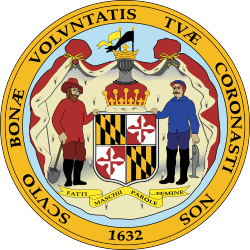| |||||||||||||||||
| |||||||||||||||||
| |||||||||||||||||
| Elections in Maryland |
|---|
 |
The 1824 Maryland gubernatorial election was held on December 13, 1824, in order to elect the governor of Maryland. Incumbent Democratic-Republican governor Samuel Stevens Jr. was re-elected by the Maryland General Assembly against former Federalist governor Charles Goldsborough, Democratic-Republican candidate Roger B. Taney and Federalist candidates Robert Henry Goldsborough and John Eager Howard. [1]
